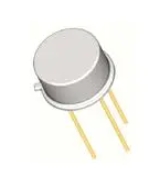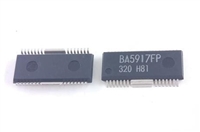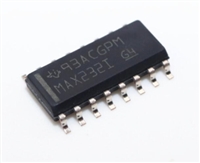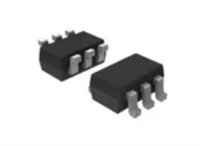Application Note 1593
Author: Jeff Lies
Add a Loss of Signal (LOS) Indicator to Your RS-485 or
RS-422 Transceiver
Rx Failsafe
In RS-485/RS-422 terminology, “failsafe” is used to indicate
Introduction
A desirable feature on any network may be a Loss of Signal
Rx functionality that drives the Rx output to a known state
(LOS) indicator. Such an indicator alerts a monitoring controller
when common bus faults occur. The logic high state typically
that a potentially serious network error has occurred, thereby
represents the idle (no transmission in progress) state, so
allowing for notification and/or intervention. In an RS-485/
driving the Rx output to a logic high under fault conditions is
RS-422 network, a LOS may occur if a connector disconnects
the usual failsafe implementation. Without the failsafe
from a board, if a cable fails, or if the network driver fails or
function, an Rx output’s inadvertant logic low, or oscillation,
loses power. When this occurs, bus activity ceases - as shown
might be interpreted as a message start bit. This could cause a
in Figure 1 - and an LOS detector would assert its output. This
processor to waste valuable time attempting to service
application note discusses the RS-485/RS-422 receiver (Rx)
operation, explains how the Rx interprets the differential bus
phantom messages.
voltages, and introduces a method for generating the desired
LOS indicator.
The most common form of failsafe is failsafe open, with
“open” referring to the condition where the Rx inputs are
floating. This can occur when a network bus is cut, or if the bus
connector separates from the networked device containing the
Rx. Most RS-485 Rx available today incorporate this function,
and it is typically accomplished via an internal pull-up resistor
on the noninverting (A) input. The pull-up is sized to ensure that
if the Rx inputs float, then the Rx input circuitry creates enough
of a positive offset so that the Rx comparator interprets the
input condition as a logic high.
5
LOS
3
1
The “Full-Failsafe” RS-485 Receiver
0
An improved differential Rx includes all the features
-1
mentioned previously, plus the addition of circuitry to ensure
V
BUS
that the Rx is failsafe if the differential input voltage (V ) is 0V
ID
-3
-5
(failsafe “shorted”). This condition may occur due to a cable
error (e.g., crimped), a connector error (shorted pins), or in
normally operating networks where multiple drivers operate
on a terminated bus (multi-point network). Multi-point
operation requires that all drivers be tri-statable, and there are
periods of time when all drivers are simultaneously tri-stated.
When this occurs, the differential termination resistor(s)
TIME (1µs/DIV)
FIGURE 1. TYPICAL LOS OPERATION
causes the bus voltage to collapse to the V =0V condition. As
mentioned before, V =0V is an undefined RS-485 level, so an
ID
Rx with only failsafe open functionality may generate
erroneous start bits.
ID
RS-485 Receiver (Rx) Basics
The RS-485/RS-422 Rx is a differential circuit (comparator)
that compares voltages at the noninverting and inverting
inputs (A and B), and outputs a corresponding logic level. Per
the Standards, if A-B (i.e., the differential input voltage) is
greater than +200mV, then the Rx outputs a logic high; if
A-B < -200mV, then the Rx outputs a logic low. Any differential
voltage between -200mV and +200mV is undefined, and the
Rx might output a logic high, a logic low, or may even oscillate.
The full-failsafe Rx solves this problem by ensuring that the
V
=0V condition is recognized as a logic high input, so the Rx
ID
output remains in the idle state. Full-failsafe functionality is
accomplished by designing the Rx so that the minimum input
high level is slightly negative (-10mV to -25mV), rather than the
+200mV used for standard RS-485 and RS-422 Rx. Note that
this new threshold definition remains RS-422 and RS-485
compliant.
February 1, 2011
AN1593.0
CAUTION: These devices are sensitive to electrostatic discharge; follow proper IC Handling Procedures.
1-888-INTERSIL or 1-888-468-3774 | Copyright Intersil Americas Inc. 2011. All Rights Reserved.
Intersil (and design) is a trademark owned by Intersil Corporation or one of its subsidiaries.
All other trademarks mentioned are the property of their respective owners.
1










 2N3500:一款多用途NPN硅晶体管的全面解析
2N3500:一款多用途NPN硅晶体管的全面解析

 最详细资料解析:BA5917AFP参数说明、引脚说明
最详细资料解析:BA5917AFP参数说明、引脚说明

 MAX232IDR数据手册:产品特性、电气参数、替代型号推荐
MAX232IDR数据手册:产品特性、电气参数、替代型号推荐

 2N7002DW数据手册:参数解读、引脚信息、替代型号推荐
2N7002DW数据手册:参数解读、引脚信息、替代型号推荐
